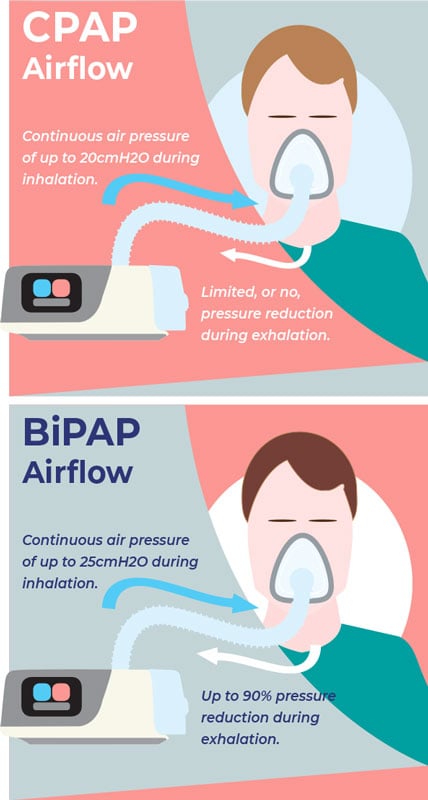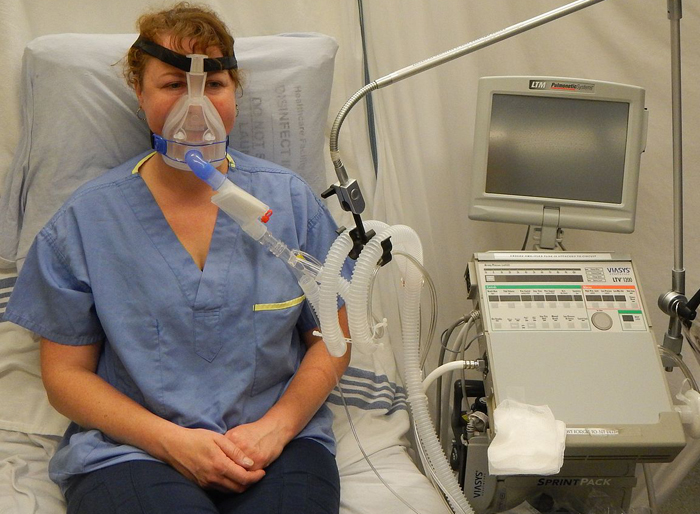Discover Flexible BiPAP Rental Options for Home Treatment
Discover Flexible BiPAP Rental Options for Home Treatment
Blog Article
Bipap vs. CPAP: Which Is the most effective for Your Rest Disorder?
When browsing the intricacies of rest disorders, the choice in between BiPAP and CPAP therapy is a vital consideration. Each method uses special advantages customized to details problems, yet the decision rests on specific client demands and comfort degrees. While CPAP gives a steady air flow ideal for obstructive sleep apnea, BiPAP's double stress setups might enhance convenience for those with even more detailed respiratory problems. Understanding these differences can considerably affect therapy efficiency, leaving one to ponder which alternative absolutely lines up with their wellness needs and way of life.
Comprehending Rest Disorders
Sleep conditions encompass a variety of problems that interfere with typical sleep patterns, affecting both the high quality and period of remainder. These conditions can show up in different types, including insomnia, rest apnea, narcolepsy, troubled leg syndrome, and parasomnias. Each condition provides unique difficulties, commonly causing considerable daytime tiredness, cognitive disability, and psychological disruptions.
Insomnia is identified by trouble dropping or remaining asleep, while rest apnea includes repeated interruptions in breathing during rest, usually leading to fragmented rest. Narcolepsy, on the other hand, is marked by excessive daytime drowsiness and unexpected rest attacks. Troubled leg syndrome causes awkward experiences in the legs, motivating an irrepressible desire to move them, which can additionally impede the ability to go to sleep.
The influence of sleep conditions extends beyond specific health and wellness, influencing overall efficiency, connections, and high quality of life. Understanding the particular nature of each disorder is important for efficient medical diagnosis and treatment. As sleep wellness comes to be increasingly recognized as a crucial component of general health, attending to these disorders is necessary for enhancing both rest top quality and day-to-day functioning.
How CPAP Functions
Continual Favorable Respiratory Tract Stress (CPAP) treatment is often utilized as a primary therapy for obstructive sleep apnea (OSA) The device of CPAP entails using a maker that supplies a stable stream of air via a mask used throughout rest. This airflow keeps favorable pressure in the airway, preventing the collapse or blockage of the throat that can take place during sleep.
When a client takes a breath in, the CPAP machine provides a continual circulation of air, guaranteeing that the respiratory tract continues to be open - BiPAP Rental. This not just reduces the symptoms of OSA, such as snoring and interfered with sleep patterns, yet also reduces the involved health and wellness dangers, consisting of cardiovascular complications and daytime tiredness
The pressure settings on a CPAP maker can be personalized to satisfy individual person demands, usually identified with a rest research. Patients commonly undertake titration research studies to locate the ideal pressure degree for their unique problem. Normal follow-up and modifications might be needed to guarantee performance and convenience. In general, CPAP therapy has actually been revealed to substantially boost the quality of sleep and general health and wellness for individuals dealing with obstructive rest apnea.
Just How BiPAP Functions
BiPAP, or Bilevel Favorable Airway Stress, is a customized form of non-invasive ventilation that is specifically helpful for patients with conditions such as complicated sleep apnea or respiratory conditions. Unlike CPAP, which delivers a constant stream of air at a single pressure, BiPAP gives two distinctive pressure settings: a higher inspiratory stress for inhalation and a lower expiratory stress for exhalation. This dual-pressure strategy enables easier breathing, reducing the initiative required throughout exhalation.
The tool runs through a mask fitted over the nose or mouth, linked to an equipment that produces air stress. When the individual inhales, the machine delivers the greater pressure to assist with airflow, making sure that the air passage continues to be open. Upon exhalation, the device instantly decreases the stress, making it much more comfy for the patient to take a breath out.

Trick Distinctions In Between BiPAP and CPAP
:max_bytes(150000):strip_icc()/GettyImages-635878206-25ee9a42856f41cfab94873074580679.jpg)
On the other hand, BiPAP (Bilevel Positive Airway Stress) supplies two different stress setups: one for breathing and a lower one for exhalation. This twin stress system permits even more comfortable breathing, specifically for clients that have problem with breathing out versus a continual stress. BiPAP is commonly suggested for individuals with complicated sleep apnea, persistent obstructive lung condition (COPD), or those that need added assistance throughout rest.
Moreover, the intricacy of BiPAP gadgets usually leads to a higher cost and requires a lot more cautious titration than CPAP. BiPAP Rental. Comprehending these essential distinctions can help in acknowledging which tool might be preferable for specific rest disorders, establishing the foundation for enlightened treatment decisions
Picking the Right Treatment
How can one figure out the most appropriate treatment for taking care of rest problems? The choice in between BiPAP and CPAP treatment mainly rests on the details features of the rest disorder, the client's total health and wellness, and their convenience with the device. CPAP, which supplies a continuous stream of air, is typically suggested for obstructive rest apnea (OSA) It keeps an open respiratory tract throughout sleep, properly avoiding apneas and hypopneas.
Conversely, BiPAP supplies 2 levels of pressure: one for breathing and a reduced one for exhalation. This dual stress system is valuable for people with complicated sleep apnea or those that experience difficulty breathing out versus a continual stress. In addition, BiPAP is commonly recommended for people with respiratory conditions, such as chronic obstructive pulmonary disease (COPD), where varying pressure setups can boost comfort and conformity.
Ultimately, a comprehensive analysis by a sleep expert, including a sleep research, can assist figure out which treatment straightens best with the individual's requirements. Aspects such as comfort, ease of use, site here and particular medical problems ought to additionally be thought about to enhance therapy outcomes.
Verdict
In recap, both BiPAP and CPAP offer unique functions in the administration of sleep problems. CPAP works for obstructive rest apnea with regular airflow, while BiPAP offers double stress settings that boost comfort for those with intricate rest apnea or respiratory system concerns. The selection between these therapies he has a good point ought to be assisted by specific needs and conditions, requiring an extensive analysis by a rest expert to make sure ideal therapy outcomes and enhanced quality of rest.

Generally, CPAP treatment has actually been revealed to significantly enhance the high quality of sleep and general wellness for individuals suffering from obstructive sleep apnea.
BiPAP is often suggested for individuals with complicated sleep apnea, chronic obstructive lung disease (COPD), or those that need additional support during sleep.
CPAP is reliable for obstructive sleep apnea through constant air movement, while BiPAP provides twin pressure settings that boost comfort for those with intricate rest apnea or respiratory problems.
Report this page